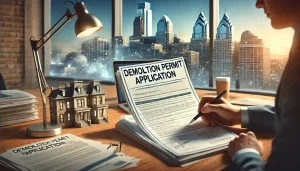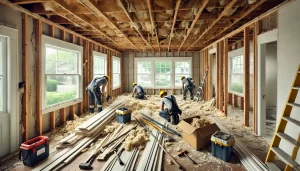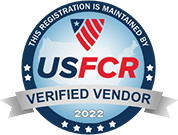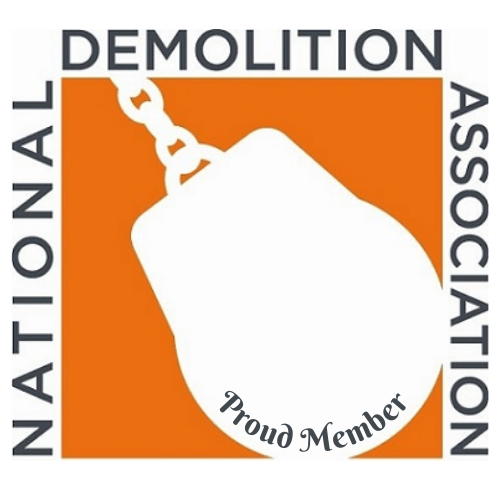Are you tasked with the critical job of demolishing a bridge? The stakes are high, and bridge demolition safety is non-negotiable. Our focused article cuts through the complexity, providing you with fundamental safety practices for bridge demolition. We’ll cover hazard identification, structural assessments, effective protective gear, and comprehensive fall protection strategies to ensure a secure and compliant demolition operation.
Key Takeaways
- Bridges possess specific hazards during demolition, necessitating a thorough assessment of risks, including structural stability and hazardous material exposure, with a proactive approach to mitigation and use of Personal Protective Equipment (PPE).
- Compliance with OSHA standards for personal protective gear, such as head and foot protection, is essential to worker safety. Regular equipment inspection and an emphasis on fall protection strategies and systems are also needed.
- Safety training and awareness are critical components of bridge demolition, which requires detailed educational programs on general safety, specific hazards, the use of PPE, and emergency response procedures.
Understanding Bridge Demolition Hazards
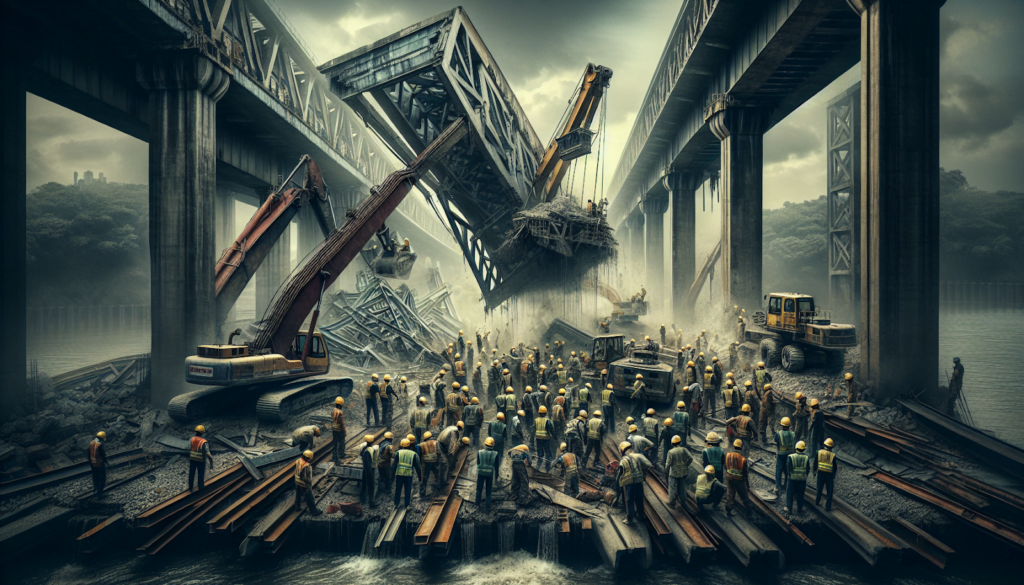

Demolishing a bridge involves an intricate dance of complex processes, each presenting unique safety hazards that construction workers must navigate. The inherent risks include exposure to falling debris and the structure’s instability, making the demolition site a high-risk environment. In addition, demolition workers may encounter hazardous materials during the process, necessitating additional precautionary measures that extend beyond handling lead.
In the high-stakes world of bridge demolition, understanding these risks is the first step to mitigating them. It’s not just about recognizing the potential safety hazards but also proactively implementing strategies to address them. This approach ensures the demolition process is conducted safely, protecting workers and the surrounding environment.
Identifying Existing and Predictable Hazards
One key step to ensuring worker safety on a demolition site involves pinpointing the existing and foreseeable hazards. A competent person appointed by OSHA takes on this crucial task, possessing the authority to enact corrective actions. Identifying safety hazards involves understanding potential routes of exposure for workers, such as inhalation and skin contact, and assessing the risk through air sampling.
When hazards are discovered, a systematic set of controls is put into action. This ranges from engineering solutions to administrative and work practice adjustments, all aimed at reducing risk. However, in instances where these mitigation strategies are not adequately protective, Personal Protective Equipment (PPE) becomes an essential safeguard for workers.
Evaluating Structural Risks
Before the first hammer hits the old concrete or the initial blast of explosives is set off, a thorough evaluation of the bridge’s structural stability must be undertaken. This vital step prevents unexpected collapses or failures, ensuring the safety of workers and the general public. This is achieved through the use of techniques like finite element analysis and a safety assessment method founded on the influence matrix principle.
These evaluation techniques consider several parameters that significantly influence the stress state during bridge demolition, including the structure’s self-weight, tendon prestress state, and construction temperature differences. Identifying potential failure modes, such as crushing the box girder’s bottom plate or cracking the piers, is essential for ensuring demolition safety.
Personal Protective Equipment (PPE) Essentials
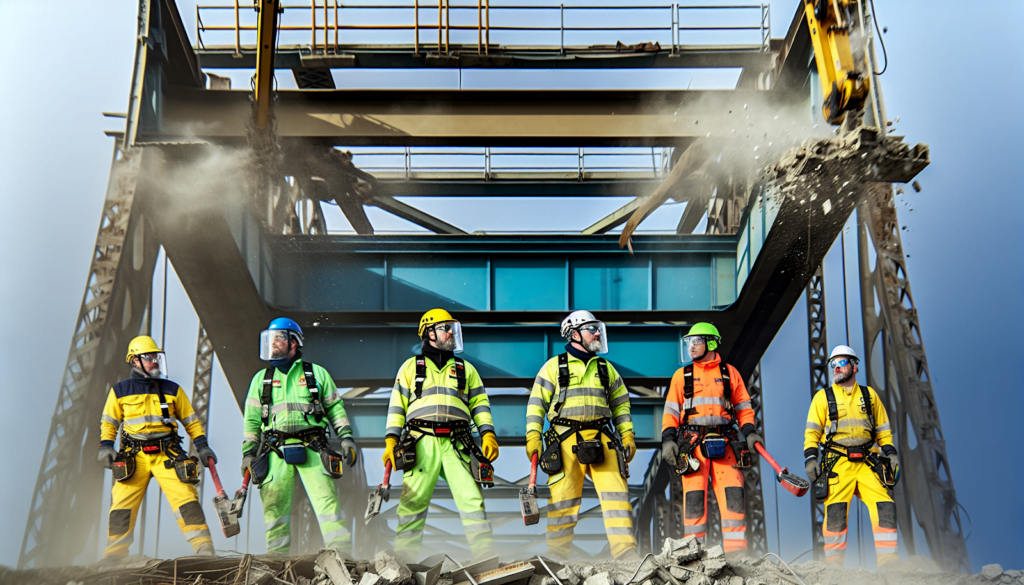

Given the hazards of the demolition process, the significance of Personal Protective Equipment (PPE) is emphasized. These protective items, from helmets to safety boots, are a crucial barrier against potential dangers, protecting employees on the job site. Proper selection and consistent use of PPE, alongside rigorous training on using them effectively, are crucial to ensuring maximum protection.
Maintaining hygiene while handling PPE, such as gloves, is equally important to prevent contamination between work sites and personal spaces.
Head Protection Applicable Standard
In an environment fraught with hazards, head protection and safety glasses are paramount. To ensure worker safety, head protection must comply with OSHA standard 1926.100, which refers to ANSI Requirements for Industrial Head Protection, Z89.1-1986, and subsequent updates outlined in ANSI Z89.1-2009, Z89.1-2003, or Z89.1-1997. However, OSHA allows for alternate head protection devices if an employer can demonstrate their effectiveness is equivalent to the devices constructed per the standards mentioned.
Helmets’ primary function on demolition sites is to protect workers from potential head injuries resulting from impacts, falling or flying objects, and electrical shock or burns. If a helmet is suspected to be damaged, it must be replaced, as compromised helmets may not offer the required level of protection.
Head protection devices must include features that effectively protect against high-voltage electric shock and burns, as per Section 9.7 (‘Electrical Insulation’) of the ANSI/ISEA Z89.1 standard.
Foot Protection Applicable Standard
Safety footwear is an essential element of PPE for foot protection. It protects against foot and leg injuries in the hazardous environment of bridge demolition. All safety footwear should conform to ANSI standards for Safety-Toe Footwear, Z41.1-1991, and adhere to OSHA 29 CFR 1910.136 regulations. Additionally, it’s crucial to stay informed about safety guidelines from organizations like the National Fire Protection Association to ensure comprehensive workplace safety.
Safety shoes must have an impact-resistant toe to prevent injuries from impact and crushing. Shoes with metatarsal guards are recommended for added protection.
Fall Protection Strategies
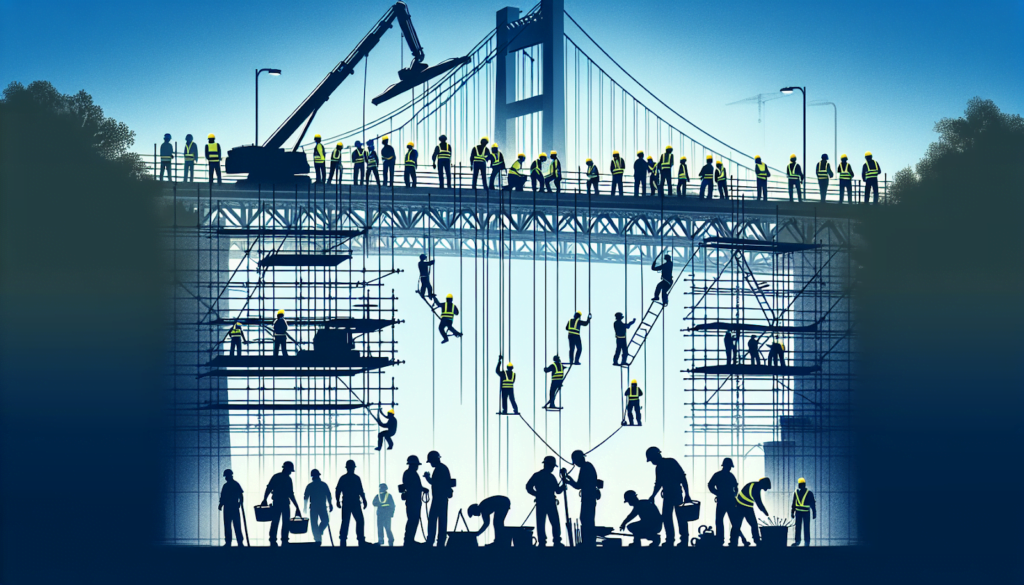

The risk of falls is among the most dangerous aspects of bridge demolition. Implementing fall protection strategies is a critical step to counter this risk. These strategies encompass:
- Personal Fall Arrest Systems designed to protect workers from falls
- Safety nets for instances when conventional fall protection is impractical
- Hole covers to minimize the risks of fall hazards on demolition sites
Conventional Fall Protection Systems
Implementing conventional fall protection systems, including a fall protection system such as:
- Guardrails
- Personal fall arrest systems
- Hole covers
- Safety nets
Fall protection is vital to safeguarding employees from fall hazards during bridge demolition, and meeting minimum fall protection requirements is essential. Guardrail systems, for instance, must be constructed with a top rail, mid rail, and toeboard that meet OSHA standards to prevent workers from falling off edges.
In addition, horizontal perimeter safety netting systems are utilized around the edges of bridge demolition sites. These nets prevent workers from falling and stop debris from causing injuries below, ensuring compliance with OSHA fall protection requirements.
The stability of scaffolding during bridge demolition is crucial, as well. It must be erected, moved, dismantled, or altered under the supervision of a competent person to ensure safety compliance with OSHA regulations.
Alternate Fall Arrest Program
An alternate fall arrest program can be implemented when traditional fall protection methods are infeasible or create greater safety hazards. However, instances where conventional fall protection is impossible are rare and usually involve momentary exposure to fall hazards during the rigging of fall protection systems. Alternate fall arrest programs may involve double lanyards for continuous protection or custom-designed anchor equipment tailored for safety in challenging work conditions such as bridge demolition.
In addition, personnel netting installed as same-floor systems allows workers to move freely without lifelines. These are ideal for interior voids or exterior edges where physical restrictions preclude the installation of standard railings. Importantly, the written fall protection plan must outline the alternative fall arrest methods to be used in situations where conventional methods are not feasible. This ensures compliance with OSHA Part 1926 Subpart M.
Safety Precautions During Demolition
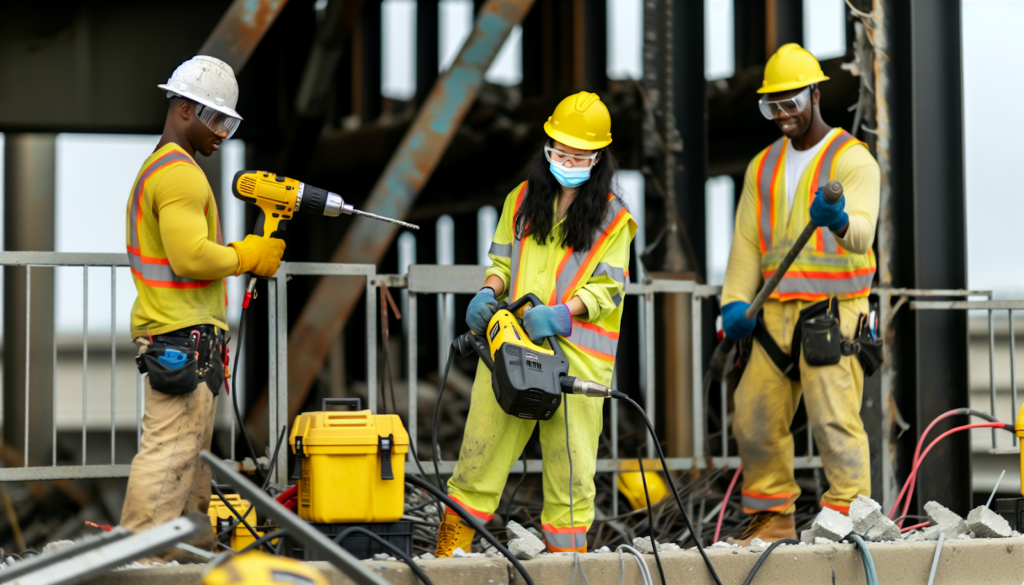

Being prepared for potential hazards during bridge demolition is crucial, but it’s just as vital to establish safety precautions to lessen these risks. These precautions range from de-energizing and locking out all utilities to prevent accidental energy releases to the proper use of PPE.
It’s important to note that enforcement of PPE usage is mandatory, with supervisors responsible for overseeing PPE compliance and addressing non-conformity.
Written Fall Protection Plan
A written fall protection program is integral to ensuring safety during bridge demolition. It must be site-specific, detailing fall protection methods, identifying potential fall hazards, and specifying the use of fall protection systems. A qualified person must prepare the program, considering the demolition site’s unique aspects.
The plan must always be kept at the job site for OSHA inspection and worker reference. This ensures that everyone is aware of the established safety procedures and fall protection measures. The hazard analysis results should be clearly summarized within the written site-specific safety plan.
Hearing Protection Devices
In the clamor of construction, the importance of hearing protection cannot be overstated. OSHA mandates the use of hearing protection for workers when noise levels reach or exceed 80 decibels averaged over an 8-hour TWA on bridge demolition sites. Hearing protection devices should adhere to a minimum NRR of 20 decibels, with double hearing protection being necessary for noise levels over 100 decibels during an 8-hour TWA.
The selection of hearing protection should account for:
- Compatibility with other PPE
- Fit and comfort
- Whether the device will be worn continuously or intermittently
- The level of noise reduction required for safety
- The necessity of maintaining clear communication among workers
These factors will influence the choice between passive and active devices.
Construction Safety Controls


As technology advances, modern construction safety controls are increasingly crucial for safe bridge demolition. These include:
- Laser scanning and drone surveying to monitor structures before and during the demolition process
- Robotic demolition machines for precision work
- Hydrodemolition equipment for concrete removal
On-site safety officers also play a vital role in implementing and monitoring adherence to strict safety protocols, ensuring the well-being of the construction crew.
Stress-Displacement Monitoring Techniques
Stress-displacement monitoring stands as a crucial tool among modern construction safety controls. It’s used to:
- Verify the structural integrity of bridges during demolition operations
- Employ intelligent monitoring means during bridge demolition to verify the accuracy of structural analyses
- Confirm the safety of ongoing demolition activities.
Incorporating this monitoring alongside cutting-edge communication technology helps to enhance safety in management. Real-time communication tools, such as mobile apps and wearable devices, are instrumental in promptly reporting potential hazards and facilitating swift emergency responses. This combination ensures the safe conduct of bridge demolition projects.
Prompt Corrective Measures
Given the ever-changing nature of bridge demolition, safety hazards can emerge in an instant. This makes prompt corrective measures necessary to address these hazards. For example, debris netting systems can be installed around and under bridges before repair or demolition work begins to safeguard people and objects below from falling materials.
In demolition involving explosives, the following safety measures must be taken:
- Establishing and securing a blast area to prevent unauthorized entry
- Having procedures in place for evacuating employees in the event of a misfire
- Conducting regular safety audits and inspections as part of safety programs to identify potential hazards before they lead to accidents, thereby preventing injuries and property damage.
Safety Training and Awareness
Safety training and awareness are paramount in ensuring safe bridge demolition, complementing physical measures and safety controls. From understanding fall hazards to knowing how to use fall protection systems correctly, training helps prevent costly fines and legal issues by ensuring compliance with construction and demolition regulations.
Protecting Workers Through Education
Education stands as a potent means of protecting workers. Construction safety training for bridge demolition encompasses crucial topics such as:
- Basic safety awareness
- Hazard and risk identification
- Fire safety
- Emergency response
Workers must receive proper training on the purpose and limitations of PPE, and training records should be systematically maintained.
Specific safety training in the context of bridge construction may also cover basic rigging, fall protection and prevention, and crane hazard management. Furthermore, Hazard Communication Programs are critical in educating employees about the hazards of the chemicals they use in bridge construction projects.
Bridge Construction Safety Programs
Bridge construction safety programs serve as fundamental components in minimizing accidents. These programs have several benefits, including:
- Creating safer work environments
- Minimizing worker injuries and illnesses
- Preventing project disruptions
- Ensuring compliance with OSHA standards
Risk management, addressing safety and health in conjunction with financial, legal, project, and environmental risks, is a key element of comprehensive safety programs. These programs must be communicated effectively and enforced, as they hold the key to fostering smarter and safer construction organizations.
Health Considerations in Bridge Demolition
Considerations of health during bridge demolition go further than just physical safety. Workers may be exposed to skin-permeable harmful substances such as paints and solvents, which require appropriate protective measures. The physical stress of demolition activities on workers highlights the importance of ergonomic practices, proper rest periods, and the use of mechanical aids to reduce strain.
Lead Hazards and Protective Clothing
During bridge demolition, workers may face health hazards like lead exposure. This can occur through inhalation of fumes or dust and ingestion from contaminated hands. To reduce lead exposure risks, it’s advised to use lead-free materials, dust-collecting equipment, and wet methods to control dust at the construction site.
To prevent lead exposure among demolition workers, appropriate personal protective equipment, such as gloves and approved respirators, must be used. Clothing contaminated with lead should not be worn home and must be cleaned daily with suitable methods to avoid spreading contamination.
Managing Psychological Stress
Construction workers face various stressors, such as physical demands, mental challenges, and external factors like weather and safety hazards. Persistent stress in the construction field can have severe health consequences, including increased risk of heart attacks, strokes, and elevated suicide rates.
Employers can manage worker stress by:
- Establishing clear job expectations
- Setting realistic deadlines
- Limiting overtime
- Avoiding task overload
- Promoting rest periods
- Giving workers more job control
- Acknowledging their performance
- Providing respectful treatment
These strategies, which include safety practices, are key to reducing stress among demolition workers.
Summary
In the complex world of bridge demolition, safety is paramount. From understanding and identifying hazards to implementing protective measures and training programs, every step is crucial in ensuring the safety of workers and the public. It’s a multi-dimensional challenge that requires a blend of advanced technologies, strict safety protocols, and comprehensive training programs. But with the right approach, even the most complex heavy demolition projects can be carried out safely and efficiently.
Frequently Asked Questions
What precautions must be set when building a bridge?
To prevent injuries from foreign objects and particles, workers must adhere to OSHA requirements for eye and face protection when building a bridge. Safety must always be prioritized to avoid accidents on the construction site.
What are the methods of bridge demolition?
Bridge demolition can be done using wire sawing, thermal lance cutting, mechanical and chemical bursting, traditional impact breakers, and flame cutting. These technologies offer various options.
What safety features exist on bridges?
Bridges incorporate safety features such as traffic and pedestrian cameras, increased illumination, restricted access to critical areas, and guardrail systems consisting of top rail, mid rail, and toeboard to ensure safety for all users.
What is the role of a competent person in a bridge demolition site?
The role of a competent person in a bridge demolition site is to identify and address workplace hazards, as designated by OSHA. This ensures a safe working environment.
How are structural risks evaluated before bridge demolition?
Before bridge demolition, structural risks are evaluated by assessing the bridge’s stability using methods like finite element analysis and safety assessment based on the principle of influence matrix.



